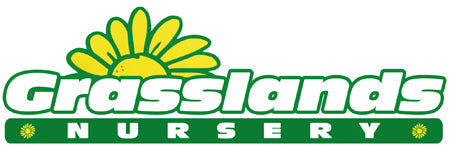Free Delivery £400+*
Hedging, Tree, Shrubs & more
Free Delivery £400+*
Save 5% on orders up to £500
Save 10% on £500+ orders
Save 15% on £1000+ orders
Trade Customers
Call us
Elaeagnus or spotted oleaster are a medium evergreen shrub with wide ovate leaves. They often bear fragrant flowers which grow in small clusters ar...
View full detailsElaeagnus or Spotted Oleaster are a medium evergreen shrub with wide ovate leaves. They often bear fragrant flowers which grow in small clusters ar...
View full detailsElaeagnus or spotted oleaster are a medium evergreen shrub with wide ovate leaves. They often bear fragrant flowers which grow in small clusters ar...
View full detailsElaeagnus or Spotted Oleaster are a medium evergreen shrub with wide ovate leaves. They often bear fragrant flowers which grow in small clusters ar...
View full detailsElaeagnus 'Quicksilver' is a deciduous shrub or small tree, known for its stunning silver-grey foliage and fast growth, making it a great choice fo...
View full detailsElaeagnus or Spotted Oleaster are a medium evergreen shrub with wide ovate leaves. They often bear fragrant flowers which grow in small clusters ar...
View full detailsElaeagnus or spotted oleaster are a medium evergreen shrub with wide ovate leaves. They often bear fragrant flowers which grow in small clusters ar...
View full detailsElaeagnus or spotted oleaster are a medium evergreen shrub with wide ovate leaves.They often bear fragrant flowers which grow in small clusters aro...
View full detailsElaeagnus or Oleaster Are not your normal hedge choice when you think of buying a new hedge. It is time that they should be thought of some more as they make lovely hedges.
Elaeagnus are mainly evergreen with some varieties being deciduous. They have simple often scaly foliage which can be green in colour, some varieties are green rimmed with yellow and vice versa. A bonus to this hedger is the lovely scents of the blossom.
Elaeagnus hedges can thrive in almost any soil type, including clay-based soils and drought-prone areas. However, they may struggle in waterlogged and chalky soil conditions. These popular hedges can be planted in shaded or partially shaded locations but develop best in bright, sunny areas, which encourages flowering and fruiting in spring, summer, and early autumn. Overall, Elaeagnus is a hardy, low-maintenance plant that can adapt to various conditions, making it a versatile addition to any area you want to screen. It is an excellent choice for coastal hedging due to its hardiness.
Elaeagnus Hedging can grow up to 3-4 meters tall, with an annual growth rate of 30-60 cm. This moderate growth rate makes it manageable and easy to shape, ensuring your hedge maintains a tidy appearance with regular pruning.
For a healthy and visually appealing Elaeagnus hedge, it’s beneficial to periodically remove spent flowers and any overgrown stems. This encourages the plant to focus its energy on producing lush, dense foliage and vibrant new growth. While this step enhances the hedge’s overall health and appearance, it can be adjusted based on your personal preferences.
To water an Elaeagnus hedge, provide deep, thorough watering once a week during the first year to establish roots. Once established, water deeply every 2-3 weeks during dry periods. Check soil moisture by feeling 2 inches deep; if dry, it's time to water. Water at the base using a soaker hose or drip irrigation to avoid wetting foliage and prevent disease. Ensure good soil drainage to avoid waterlogging and reduce watering during rainy periods. Mulch around the base to retain moisture and reduce watering frequency.
It requires little pruning as it is grown as a loose hedge rather than a tightly knitted one as its foliage is a larger size. When it comes to pruning, it's a good idea to adopt a little and often mentality. This will keep your hedge under control and in a manageable shape. However, we also suggest that a heavier regime of pruning in late winter, ahead of the new growth that comes with spring, will best aid your Elaeagnus’ development.
Can be fed with a general-purpose feed or you can mulch to offer food as well, this can be done in spring and again in summer.
Watch for small, pink or red spots on branches and leaves, which can cause dieback. Remove and dispose of affected branches and leaves. Improve air circulation and apply a suitable fungicide.
Look for stunted growth and honeydew on leaves, as this pest feeds on plant sap. Prune affected areas and use insecticidal soap or horticultural oil to control the pest.
Issues like poor soil, inadequate watering, or improper planting can hinder the successful establishment of Box hedging.
Our plants are expertly grown and cared for, before being sold at excellent prices to retailers and the public.
We are a trusted and respected nursery, with a reputation for producing top-quality plants.
Our team of horticulturists care for our products to ensure happy, healthy plants which are ready for sale.
We want our plants to live a long, healthy life so we’ll advise you about planting on purchase and share tips on our blog.
We supply to Garden Centres, Landscapers, Garden Designers offering exclusive discounts.
CREATE A TRADE ACCOUNT
£400.00 away from free* delivery!
